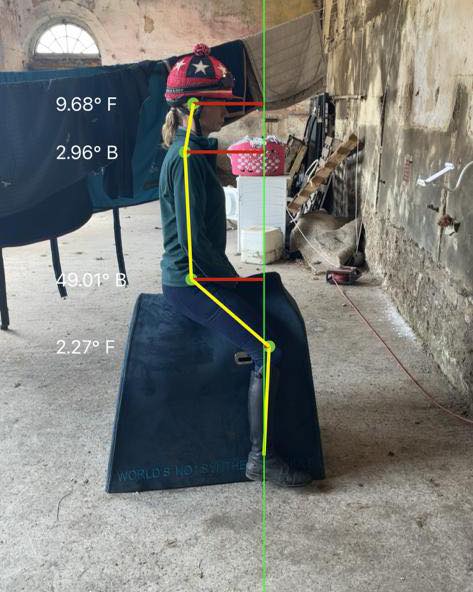Our work with the Rider Rehab Centre...
Share
If you’re a regular reader of my blogs here on the Equiseat Aid website, then you will know that we have total confidence in our riding aid and that it can help transform your riding and how your horse goes. But it’s important for us that we can base our confidence in scientifically proven trials which not only prove that the Equiseat Aid is effective, but also help us improve the way we share the benefits of it with our followers. That’s why we’ve started working with Kathryn Burns and her business the Rider Rehab Centre. Kathryn is the Clinical Lead at the Rider Rehab Centre and a fully qualified Neurological Physiotherapist, and together with her team offers specialist rider physiotherapy, neurological rehab and performance analysis. That means she’s the perfect person to help us show the benefits of riding in the Equiseat Aid by assessing riders before, during and after they first start using it. Here’s how the study worked:
- We recruited two volunteers back in late June to help us, and they each attended a 30-minute rider assessment session with Kathryn at her base near York.
- Kathryn measured form, strength, range and symmetry both in and out of the saddle using a sensor mat and other equipment and recorded all the data points.
- She then repeated her measurements with the riders wearing the Equiseat Aid. The riders would take the aid home and come back in three weeks.
- The volunteers were asked to ride in it throughout the three-week period before coming back for a further assessment.
- They then returned to Kathryn to have the same measurements taken so that she could compare the data and see what had changed since they had been wearing the Equiseat Aid when riding.
So, what did this study reveal?
Both riders were identified as having multiple physiological issues, from their pelvis and/or a leg rotating to muscle tightness or weakness, ITB issues, twisting and even overactive hamstrings. The sensor mat, which was used while the riders were sitting on a synthetic ‘horse’ showed that neither were sitting equally on both seat bones and therefore were not likely to be balanced in the saddle.
When assessed riding their horses without the seat aid, Kathryn noted plenty of issues including that both riders fell out through their left hip, causing them to compensate in several ways. Both riders showed some improvement immediately when wearing the Equiseat Aid, with greater lower leg stability and some of their other issues lessening.
When the two volunteers returned after the 3-week break their list of physiological issues had reduced, and any remaining issues were generally milder. Their sensor mat readings showed more even pressure through the left and right seat bones, and while it wasn’t perfect, it was far better than it had been. In the saddle, both riders showed improved symmetry in the saddle and pelvic stability, as well as a reduction in over activity of legs and muscles. These results are so promising and show the benefits of wearing the seat aid even for just three weeks.
Here’s what Kathryn herself had to say after seeing the Equiseat Aid in action:
“I must admit that I was sceptical initially that something so simple and easy to use would have much impact on a rider's position, but I have been extremely impressed. As a physio working with riders a lot of my role is showing riders how to activate muscles, both on and off the horse This can be done through exercises, cues, use of bands, tape or Franklin balls. The much harder thing that we need to do is reduce the over activity in the opposite muscle groups, the ones that are working too hard to compensate for the weak ones. This is where the Equiseat Aid has really impressed me, it has not only helped to activate the weak muscles but has massively helped to switch off the overactive muscles all with minimal effort from the rider. During testing we have found that using the riding aid has not only improved the riders’ posture on and off the horse but has improved their muscle power too.”
Kathryn has had two ankle surgeries recently and, having identified that her bad ankle is causing her issues in the saddle, she has started riding in an Equiseat Aid herself. Now if that isn’t an important seal of approval from an expert in our shared field, I don’t know what is. I’m also excited to share the news that we will be conducting another study with even more riders which will give us more case studies and data to share with you all. So, if you’ve been a little bit sceptical about how something so simple can make such a difference to a rider’s position in the saddle and how they balance, all I can say is make sure you keep a close eye on our social media and blogs going forward.

